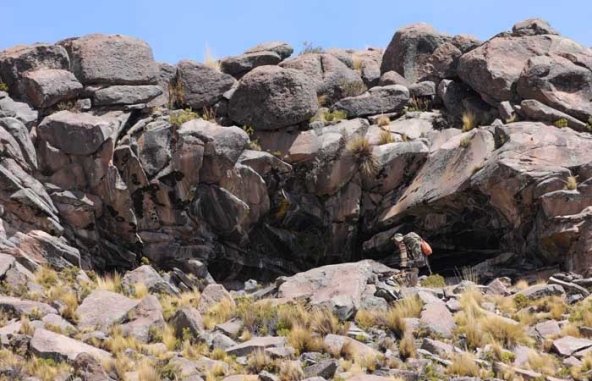 |
| 1/7. The Cuncaicha rock shelter high is located high in the Peruvian Andes. As humans populated South America at the end of the last Ice Age, some settled at this site. |
From the mouth of a cave high in the Andes, Kurt Rademaker surveys the plateau below. At an altitude of 4,500 metres, there are no trees in sight, just beige soil dotted with tufts of dry grass, green cushion plants and a few clusters of vicuñas and other camel relatives grazing near a stream.
The landscape looks bleak, but Rademaker views it through the eyes of the people who built a fire in the rock shelter, named Cuncaicha, about 12,400 years ago. These hunter-gatherers were some of the earliest known residents of South America and they chose to live at this extreme altitude — higher than any Ice Age encampment found thus far in the New World. Despite the thin air and sub-freezing night-time temperatures, this plain would have seemed a hospitable neighbourhood to those people, says Rademaker, an archaeologist at the University of Maine in Orono.
“The basin has fresh water, camelids, stone for toolmaking, combustible fuel for fires and rock shelters for living in,” he says. “Basically, everything you need to live is here. This is one of the richest basins I've seen, and it probably was then, too.” [...] nature.com/








No hay comentarios:
Publicar un comentario